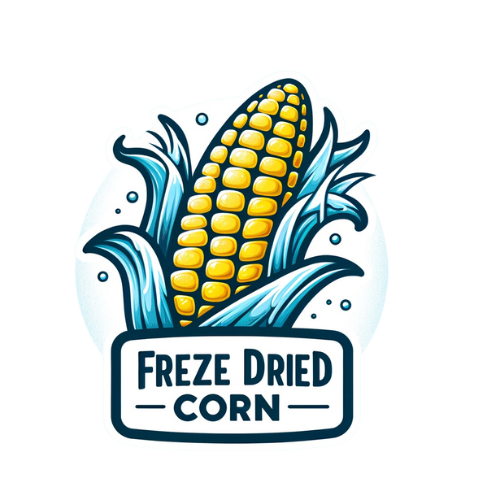When it comes to preserving the sweetness and versatility of corn, consumers and chefs alike have several options at their disposal. Among the plethora of choices, freeze-dried corn, canned corn, and fresh corn are commonly debated. Each preservation method offers unique benefits and drawbacks. In this article, we delve into comparing freeze-dried corn to its fresh and canned counterparts, examining the quality, benefits, and determining which preservation method may be deemed the best under varying circumstances.
Understanding the Different Corn Preservation Methods
Before we pit freeze-dried corn vs other forms of corn, it’s essential to understand what each process entails:
- Freeze-Dried Corn: This method involves freezing the corn and then reducing the surrounding pressure to allow the frozen water in the corn to sublimate directly from the solid phase to the gas phase.
- Canned Corn: Canning involves packing whole kernels or cream-style corn into cans, followed by sealing and heating to destroy bacteria and enzymes.
- Fresh Corn: Simply, corn in its natural state, typically consumed shortly after harvest to maintain its flavor and nutritional value.
Comparing Freeze-Dried Corn to Fresh and Canned Corn
Nutritional Value
Freeze-dried corn retains most of its nutrients due to the low-heat process that minimizes the loss of heat-sensitive vitamins. Canned corn, while convenient, often has added salt or sugar and may lose some nutrients during the high-heat canning process. Fresh corn, of course, has the advantage of being consumed in its most natural state, with all its vitamins and minerals intact.
Shelf Life and Storage
In the debate of freeze dried corn vs other corn types, shelf life plays a pivotal role. Freeze-dried corn boasts an impressive shelf life, often lasting for years without refrigeration, as long as it’s kept in an airtight container. Canned corn also has a long shelf life but requires more storage space and can be susceptible to can damage or corrosion. Fresh corn, however, has the shortest shelf life and usually needs to be consumed within days unless preserved through freezing or canning.
Taste and Texture
For many, the taste and texture are the deciding factors. Freeze-dried corn tends to have a crunchier texture until rehydrated, and its flavor is concentrated. Canned corn can have a softer texture and a taste that some people find less appealing than fresh corn. Fresh corn, on the other hand, is known for its natural sweetness and juicy kernels, which is often preferred if available.
Convenience
Canned corn is often hailed for its convenience – just open the can and it’s ready to eat or add to recipes. Freeze-dried corn also offers convenience; it is lightweight, easy to store, and requires no cooking, just rehydration. Fresh corn requires husking, cleaning, and typically cooking, which can be time-consuming in comparison.

Freeze Dried Corn Benefits
When weighing freeze dried corn benefits, several factors stand out. It’s incredibly lightweight and easy to transport, making it ideal for camping trips or emergency food supplies. The freeze-drying process also locks in flavor and nutrients effectively, often resulting in a product that is superior in taste and nutritional content to canned corn. Moreover, freeze-dried corn is usually free from added preservatives, appealing to those looking for a more natural food product.
The Best Corn Preservation Method
Deciding on the best corn preservation method depends on the specific needs and preferences of the consumer. If longevity and storage are the primary concerns, freeze-dried corn is unparalleled. For those who prioritize convenience and immediate readiness, canned corn could be considered the best. However, for those who value flavor and texture most highly, fresh corn is likely the preferred choice.
Freeze Dried Corn Quality
When it comes to quality, freeze-dried corn typically offers a more consistent product. The freeze-drying process preserves the original shape, color, flavor, and nutritional value of the corn better than canning. It is also less likely to contain additives, which can be common in canned products.
Freeze Dried Corn vs Fresh and Canned: Environmental Impact
The environmental impact of each corn preservation method also varies. Freeze-drying is energy-intensive initially, but the lightweight nature of the final product reduces transportation emissions. Canned corn, while using less energy in preservation, results in heavier products that may contribute to higher emissions during transportation. Fresh corn has the lowest initial environmental impact, but its short shelf life can lead to food waste if not managed properly.
Conclusion
In the discussion of freeze-dried corn vs. fresh and canned, there is no one-size-fits-all answer. Each method has its unique advantages that cater to different needs. Freeze-dried corn stands out for its long shelf life, nutrient retention, and convenience, making it an excellent choice for long-term storage and minimalistic cooking environments. Fresh corn is unbeatable in terms of taste and texture when available, while canned corn is the go-to for hassle-free, ready-to-eat scenarios. Ultimately, the best corn preservation method is the one that aligns with your priorities, whether they be nutritional, environmental, or convenience-based.
By understanding the full spectrum of comparing freeze-dried corn to its fresh and canned peers, consumers can make informed decisions that best suit their lifestyle and dietary preferences.

There are no reviews yet.